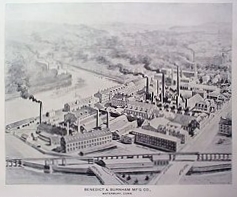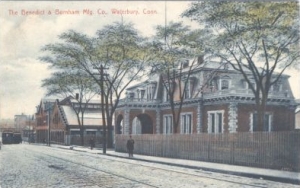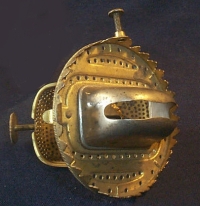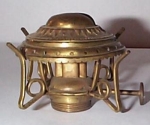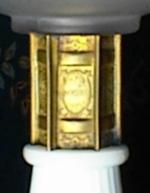In 1824, James Croft, a partner, went to England to purchase a larger rolling mill. Benedict could now produce all the brass he needed, plus a surplus to market to other companies. Israel Coe partnered with Benedict on February 2, 1829 to form Benedict & Coe. Other partners included Bennet Bronson, Benjamin DeForest, and Alfred Platt. Coe left the firm in 1834 to pursue other business ventures. Israel Coe's name turns up time after time in the Naugatuck Valley's brass history.
Benedict & Burnham Timeline
 Search Benedict & Burnham's Patents Search Benedict & Burnham's Patents
To view any of the above patents, enter the number in the box below and select Query USPTO Database. This will take you to the specific patent images on the U.S. Patent & Trademark Office Database. Learn more about the USPTO here. End Notes
References
| ||||||||||||||||||||||||||||||||||||||||||||||||||||||||||||||||||||||||||||||||||||
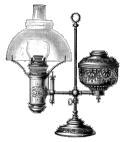
| Reference Desk | Lamp Information | Other Resources | On-Line Shopping |

Purveyors of Antique Lighting and Accessories
435 Main Street
 Hurleyville, New York 12747
Hurleyville, New York 12747
|
|
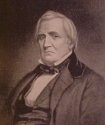 Aaron Benedict
Aaron Benedict
|
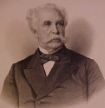 Gordon W. Burnham
Gordon W. Burnham
|
|
|
 front of button
front of button
|
 back of button
back of button
|
a brief historical profile of

The Benedict & Burnham Mfg. Co.
^ Top of Page
Privacy Policy | Terms and Conditions of Use | Announcements
Copyright © 2001-2011 ~ Daniel Edminster | The Lampworks ~ All Rights Reserved
